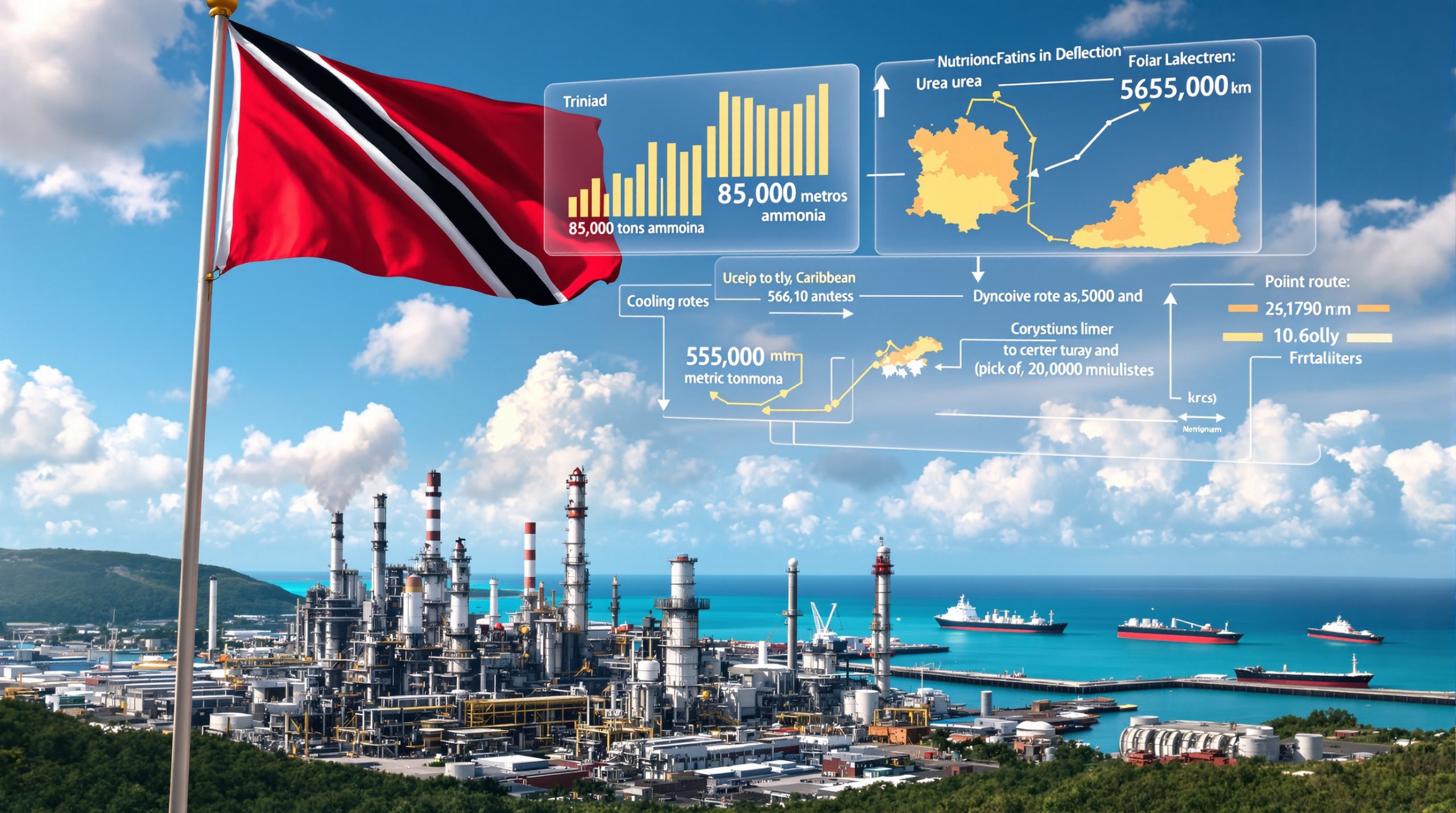Nickel Market Shows Signs of Resilient Recovery Despite Global Challenges
The nickel market has demonstrated remarkable resilience in 2025, maintaining stability despite various global economic pressures. With several key factors converging to support prices, industry experts are cautiously optimistic about the sector's recovery trajectory. From supply constraints to evolving Chinese industrial policies, the fundamentals point toward potential strengthening in the coming months.
Current Nickel Market Dynamics
The nickel market has established a relatively stable trading range between $15,000 and $15,800 per tonne since April 2025. This price stability comes despite persistent challenges, with the market consistently testing the lower range while showing notable resilience against downward pressure from Chinese market participants.
One of the most intriguing aspects of the current market is the disconnect between projected surpluses and actual inventory levels. While analysts have predicted significant oversupply, LME warehouses have seen limited inventory accumulation of only approximately 1,500 tonnes weekly. This divergence suggests underlying demand strength that isn't fully captured in traditional market analysis.
Approaching Supply Constraints
A critical factor supporting price stability is the approaching Philippine rainy season, expected to begin within 60 days. This seasonal shift typically renders approximately 50% of Philippine ore production unavailable, creating a predictable tightness in global nickel ore markets.
"The seasonal nature of Philippine production creates a cyclical tightness that often provides price support during otherwise challenging market conditions," notes Mark Selby, CEO of Canada Nickel Corp.
Chinese attempts to suppress ore prices have shown limited effectiveness, as suppliers have become increasingly savvy about market dynamics. With the wet season approaching, many suppliers are holding firm on pricing, anticipating the supply constraints ahead.
Industry Insight: The nickel market often experiences a seasonal price strengthening coinciding with the Philippine rainy season, as the country provides a substantial portion of global nickel ore supply, particularly for the Chinese NPI industry.
What's Driving Chinese Policy Changes in the Nickel Sector?
China's approach to industrial capacity management has undergone a significant shift in 2025, with far-reaching implications for the nickel market recovery and Chinese policy shifts. The government has pivoted from prioritizing cheap production to focusing on eliminating excess capacity across multiple industries, including nickel pig iron (NPI) and stainless steel production.
This policy shift represents a strategic response to combat deflationary pressures that have challenged the Chinese economy. By reducing excess capacity, authorities aim to improve profitability across industrial sectors while addressing environmental concerns.
Tangible Market Impacts
The effects of these policy changes are already manifesting in market prices:
- NPI prices have increased for 4-5 consecutive weeks
- Stainless steel prices have shown parallel strengthening
- Producer margins have improved across the value chain
- Investment in quality over quantity has increased
Broader Economic Indicators
Supporting these industrial policy shifts, Chinese economic indicators show promising signs of recovery:
- The Chinese composite stock index has reached 10-year highs
- Year-over-year stock market performance has increased by 35%
- Market liquidity and capital circulation have significantly improved
- Investor sentiment indicators suggest growing economic confidence
These broader economic improvements provide a supportive backdrop for the nickel market recovery, indicating potential for sustained demand growth as Chinese industrial activity normalizes under the new policy framework.
How Strong is Electric Vehicle Demand for Nickel?
EV demand transformation continues to drive significant nickel demand growth despite technology diversification. Global EV sales showed a robust 21% year-over-year increase in July 2025, with year-to-date growth reaching 27% across global markets.
Regional performance varies significantly:
| Region | YoY Growth Rate | Notable Trends |
|---|---|---|
| Europe | Over 30% | Strong BEV and PHEV sales momentum |
| Asia (ex-China) | 25% | Accelerating adoption in emerging markets |
| China | 23% | Government incentives supporting continued growth |
| United States | 2% | Temporary weakness amid policy transitions |
Battery Chemistry Evolution
While lithium iron phosphate (LFP) batteries continue gaining market share, nickel-containing chemistries remain essential for high-performance applications. Data shows an 8% year-over-year increase in nickel deployment for EV batteries, despite the technology diversification.
This trend supports projections of nickel demand reaching 5-6 million tonnes annually by 2030, with battery applications representing an increasingly significant portion of total consumption.
Technical Note: High-nickel cathode formulations (NCM 8-1-1 and similar) remain the preferred chemistry for premium vehicle segments where range and performance are prioritized over initial cost considerations.
Government Support for Critical Minerals Development
Government engagement with critical minerals strategy has intensified significantly in 2025, with concrete actions replacing previous rhetorical support. This shift recognizes the strategic importance of minerals like nickel in energy transition and national security contexts.
Unprecedented Policy Momentum
The Canadian government is hosting what appears to be the largest trade mission for critical minerals companies to date, demonstrating high-level commitment to sector development. This initiative aims to connect Canadian mining companies with international partners, facilitating investment and technological exchange.
In the United States, unprecedented high-level engagement has occurred with mining executives, including representatives from majors like BHP and Rio Tinto meeting at the White House. These discussions focus on addressing regulatory obstacles for strategic projects and exploring public-private partnerships to accelerate domestic supply chain development.
From Words to Action
This shift from rhetorical support to concrete policy actions represents a significant change in government approach. Industry observers anticipate substantial government funding announcements in the coming months, potentially including:
- Streamlined permitting processes for critical mineral projects
- Tax incentives for domestic processing and refining
- Direct investment in strategic resource development
- Enhanced export controls on sensitive technologies
These policy developments provide a supportive backdrop for nickel market recovery, potentially accelerating project development timelines and improving investment economics.
Junior Mining Companies Making Progress
Despite challenging market conditions, junior mining investments have made significant progress advancing nickel projects in 2025. These developments indicate improving health across the sector and potential for new supply sources in the medium term.
Exploration and Development Milestones
Several companies have announced meaningful advancements:
| Company | Recent Development | Significance |
|---|---|---|
| Homeland Exploration | Secured surface exploration permits for Oregon nickel laterite properties | Oregon represents rare domestic U.S. location with historical nickel production |
| LifeZone Metals | Obtained $60M bridge facility from Taurus | Enables continued advancement of Kabanga nickel project |
| Talon Metals | Encouraging drilling results with 25-meter step-out | Potential continuity of deposit with additional exploration targets |
| NexMetals | Extended mineralization over 300m down-plunge | 3% copper grades with associated nickel credits |
| Magna Mining | Multiple infill holes with multi-percent nickel grades | Supports near-term mining plans in Sudbury district |
| First Atlantic Nickel | Expansion of Awaruite deposit with DTR nickel grades of 0.11-0.12% | Solid results for deposit type and geological setting |
Improving Financing Environment
The capital markets environment for quality mining projects has gradually improved throughout 2025. Companies with advanced projects or strategic assets have successfully accessed necessary funding through various mechanisms:
- Strategic investor partnerships
- Traditional debt facilities
- Flow-through share offerings
- Royalty and streaming arrangements
The strength in gold prices, consistently above $3,300/oz, has benefited the broader mining sector, improving investor sentiment toward exploration-stage companies. This positive sentiment has begun extending to critical minerals projects, including nickel, particularly those with clear paths to production.
What Does the Future Hold for Nickel Prices?
The nickel market appears positioned for more dynamic price action after prolonged range-bound trading. Several converging factors could serve as catalysts for price movement in the coming months.
Potential Catalysts for Price Movement
-
Seasonal Supply Constraints
- Philippine rainy season reducing ore availability
- Typically impacts market for 3-4 months annually
- Effects compounded by limited global inventories
-
Chinese Industrial Policy Implementation
- Continued reduction of excess capacity
- Improving profitability across the value chain
- Potential for production cuts among high-cost producers
-
Electric Vehicle Demand Trajectory
- Continued strong growth in key markets
- Battery chemistry trends favoring nickel in premium segments
- Potential acceleration of adoption in currently weaker markets
-
Government Support Initiatives
- Implementation of critical minerals strategies
- Potential funding announcements for strategic projects
- Regulatory streamlining for priority developments
The combined effect of these factors suggests potential for upward price movement, though market participants should remain vigilant regarding the timing and magnitude of these influences.
Market Insight: The nickel market often experiences its strongest price action during periods when multiple supportive factors align, particularly when seasonal supply constraints coincide with improving demand fundamentals.
Investment Implications for the Nickel Sector
The evolving nickel market dynamics create both opportunities and challenges for investors. Strategic positioning becomes increasingly important as the market transitions from stability to potential growth.
Strategic Positioning Opportunities
Companies with quality projects are increasingly gaining access to capital, allowing operational progress across multiple development stages. The improving government policy environment, with potential for increased funding and regulatory support, further enhances project economics.
Investors may find opportunities in several categories:
- Near-term producers: Companies transitioning from development to production within 12-18 months
- Advanced explorers: Projects with defined resources entering economic studies
- Strategic resource holders: Companies with assets in favorable jurisdictions with supportive policies
- Technology innovators: Firms developing processing innovations that improve economics or environmental performance
Risk Factors to Monitor
While the outlook appears increasingly positive, several risk factors require ongoing monitoring:
- Chinese policy implementation consistency: Changes in approach could impact market dynamics
- Electric vehicle adoption rates: Any significant slowdown would affect battery nickel demand
- Timing and scale of government support: Delays in implementation could impact project development timelines
- Battery chemistry evolution: Acceleration of LFP adoption could moderate nickel demand growth
Balancing these opportunities and risks requires careful due diligence and strategic timing of investment decisions.
FAQ: Nickel Market Recovery
Why has the nickel price remained range-bound despite market challenges?
The nickel market has demonstrated remarkable resilience, maintaining a trading range between $15,000 and $15,800 per tonne since April 2025. This stability reflects several counterbalancing factors:
- Limited actual inventory accumulation despite projected surpluses
- Underlying demand strength from both battery and stainless steel sectors
- Strategic positioning by market participants anticipating future supply constraints
- Gradual improvement in Chinese industrial policies reducing excess capacity
How significant is the approaching Philippine rainy season for nickel supply?
The Philippine rainy season typically renders approximately 50% of the country's nickel ore production unavailable, creating a predictable seasonal tightness in global markets. This reduction is particularly significant because:
- Philippine ore is a key input for Chinese NPI production
- Alternative supply sources cannot fully compensate for the shortfall
- The timing coincides with improving Chinese industrial policies
- Limited global inventories provide minimal buffer against supply disruptions
This seasonal pattern often provides a catalyst for price movement after prolonged periods of range-bound trading.
What explains the discrepancy between projected nickel surpluses and actual inventory levels?
The notable gap between projected market surpluses and limited inventory accumulation suggests several potential explanations:
- Stronger underlying demand than captured in traditional analysis
- Supply constraints not fully accounted for in projections
- Strategic stockpiling occurring outside traditional inventory channels
- Potential underreporting of consumption by market participants
This disconnect highlights the importance of monitoring physical market indicators alongside traditional supply-demand forecasts.
How is the shift toward LFP batteries affecting nickel demand?
While the increasing adoption of lithium iron phosphate (LFP) batteries has moderated growth in nickel deployment for some EV applications, overall demand remains robust:
- 8% year-over-year increase in nickel deployment for batteries despite technology diversification
- Premium nickel chemistries retaining importance for high-performance applications
- Segmentation of the market with nickel-rich formulations dominating in premium vehicles
- Overall trajectory still aligned with long-term demand projections of 5-6 million tonnes annually by 2030
This technology diversification represents an evolution rather than displacement of nickel in the battery supply chain.
Further Exploration: Understanding the Nickel Market Recovery
Investors seeking to deepen their understanding of nickel market dynamics should consider exploring several key areas:
- Supply chain developments: Monitor processing capacity additions, particularly in Indonesian nickel challenges and other key producing regions
- Battery technology evolution: Track advancements in high-nickel cathode formulations and their commercial deployment
- Government policy implementation: Follow concrete actions stemming from critical minerals strategies
- Junior company milestones: Evaluate progress reports and economic studies from developing projects
These areas provide valuable indicators of market direction and potential investment opportunities as the nickel market recovery and Chinese policy shifts continue to unfold throughout 2025.
Disclaimer: This article contains market analysis and forward-looking statements about the nickel market. All projections and forecasts should be considered opinions rather than guarantees of future performance. Investors should conduct their own due diligence before making investment decisions.
Interested in Discovering the Next Major Mining Opportunity?
Discovery Alert's proprietary Discovery IQ model instantly identifies significant ASX mineral discoveries, providing actionable insights that can give you a market-leading edge in both nickel and other commodity investments. Explore how historic discoveries have generated substantial returns by visiting the Discovery Alert discoveries page.




